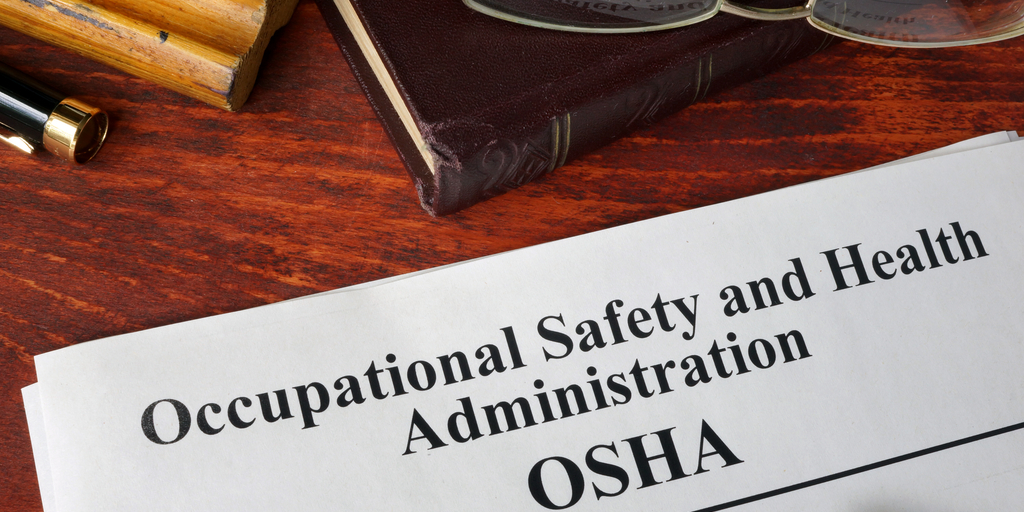
Original Post:
On October 5th, President Joe Biden announced his COVID-19 Action Plan, which included a rule requiring employers with 100 or more employees to mandate that their workers be vaccinated or undergo weekly testing. In order to enforce the rule, the Department of Labor’s Occupational Safety and Health Administration (OSHA) had to develop an Emergency Temporary Standard (ETS).
The White House released the details of the new ETS yesterday, November 4th, 2021, with the effective date of November 5th, 2021. Here are the main considerations for employers:
What are the requirements of the new OSHA ETS?
“Covered Employers” (private employers with more than 100 employees) must:
- Establish, implement, and enforce a written policy on vaccines, testing, and face coverings that requires employees to either be fully vaccinated against COVID-19 or test for COVID-19 at least weekly and wear a face covering;
- Provide certain information to employees on vaccines and the requirements of the ETS;
- Provide paid time off to employees to obtain the vaccine and reasonable time and paid sick leave to recover from side effects experienced following any primary vaccination series dose;
- Obtain and maintain records and roster of employee vaccination status; and
- Comply with certain notice requirements when there is a positive COVID-19 case and reporting to OSHA when there is an employee work-related COVID-19 fatality or hospitalization.
Are there any penalties for non-compliance?
Covered Employers could face OSHA citations and penalties of up to $13,653 per violation, as well as additional citations or penalties as determined by OSHA or state OSHA. For willful or egregious failures to comply, OSHA is authorized to issue more meaningful penalties – up to as much as $136,532 per violation. In addition to OSHA citations and penalties, covered employers may face potential exposure for individual whistleblower, retaliation, negligence, and other claims potentially asserted by employees.
When do the OSHA ETS go into effect and when do employers have to comply?
The ETS are effective as of being published in the Federal Register today, November 5th, 2021. Covered employers must comply with all requirements aside from the testing requirements for employees who are not fully vaccinated by December 5, 2021. Covered employers must comply with the testing requirements for employees who are not fully vaccinated by January 4, 2021.
Who counts as a “Covered” employer?
“Covered Employer” refers to all private employers with 100 or more employees. There are a few limited exceptions where employers are already covered by a separately issued COVID-19 mandate; such as employers who are federal contractors covered by the Safer Federal Workforce mandate and healthcare employers covered by the Healthcare ETS.
The 100-or-more employee threshold is determined by counting all employees across all of a company’s U.S. locations as of November 5th, 2021, regardless of where they perform their work. Part-time and full-time employees should be counted, as well as any temporary or seasonal employees that are employed at any time during the effective period of the ETS.
OSHA considers an employer “covered” if they hit the 100-employee threshold at any time during the effective period of the ETS. The employer remains covered as long as the standard is in effect, even if they subsequently fall below that threshold later.
What if my state has their own OSHA plan?
State Plan states have up to 30 days to either adopt the federal ETS or create their own standards that are at least as effective as the federal standards. OSHA’s ETS specifically states that it invalidates any state or local requirements that ban or limit an employer’s authority to require vaccination, face covering, or testing.
Ten states have already preemptively sued to block the new rule, however they may be deemed invalid, as they were filed prior to the rule being published in the Federal Register. Recently, OSHA has moved to attempt to revoke state-run plans for failure to enforce standards under the Healthcare ETS and is expected to do the same under the new ETS.
Emplicity will be closely monitoring cases and updates related to OSHA’s ETS and will provide more information as it is received.
Learn how Emplicity can help you manage workplace safety regulations.
Fill out the form and we will send you more information.
About Emplicity:
Since 1995, Emplicity has provided a smarter, more secure, and integrated platform of employer services to its 300 business clients and their 8,500 employees. As a Professional Employer Organization, or PEO, the California-based HR outsourcing firm simplifies the compliance, administration, and support businesses need in the areas of employee benefits, payroll, and human resources technology.
NOTICE: Emplicity provides HR advice and recommendations. Information provided by Emplicity is not intended as a substitute for employment law counsel. At no time will Emplicity have the authority or right to make decisions on behalf of its clients.

